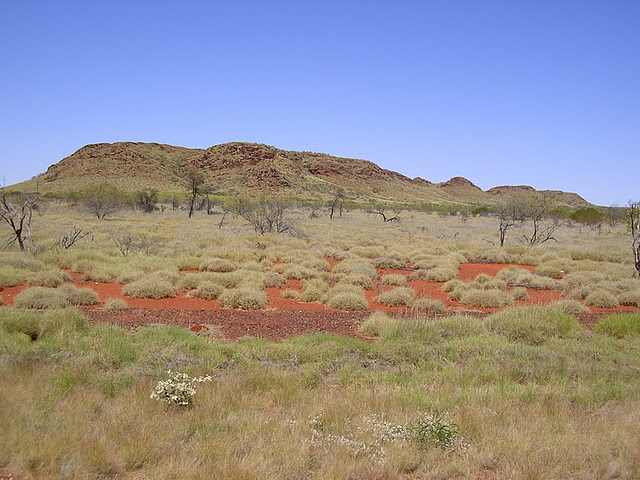I think our exposure to documentaries or marketing written by or aimed at the US, the UK and Asia make us think we are familiar with this land and those who live in it (the people, plants and animals), and to some extent even contemptuous of what we have here. Most of us live in cities, and urban sprawl means many travel large distances daily, but this is still nothing compared to the stretch of roads, tracks or pasture crossed by those living or travelling outside of the metropolis.
 |
| Almost 300 km between roadhouses, and that's on 'highway 1' |
Expanse is a word with true meaning here.
As people we are also similarly diverse. We have different upbringings, different schooling, different lifestyles, different workplaces, different meanings for home. But we all call Australia home, yet so many know so little of their home, like a house full of locked rooms. We will assume we know what's behind each closed door, often incorrectly.
In remote areas, distances between children can be such that schooling is delivered over the airwaves rather that in a classroom, a different experience to our typical classrooms. Our diverse cultures mean children might be educated while walking the landscape, visiting traditional places used for many thousands of years over countless generations, or even through cooking a traditional meal with cultural significance.
Children in Aboriginal communities often learn a handful of languages before they even begin to learn English words, while the majority of immigrant families maintain their first language as well as English.
I feel ashamed that I am Australian yet only know English. Knowing only one language does not fit with our nations history - neither with Australia's first peoples who typically spoke three or more languages, nor its immigrant past and present, yet we seem to demand the 'common' language be spoken and written with perfect precision by all. The only true common language of this country is a friendly smile and a wave, which works universally to break down unnecessary barriers.
I can't really understand Aussies from the east coast who have been on long haul flights overseas time after time, but haven't seen the west coast, or even the middle bits! Such is our contempt for our own land. There are overseas travelers who have seen more of Australia than the majority of Australians, I KID YOU NOT.
Have you never wondered what would it really be like to live in an isolated community? To understand why 'country folk' hate the hussle and bussle of the cities, and to even feel that way yourself at times? What's it like to grow up as a kid on a cattle property, and follow in your fathers' and grandfathers' footsteps raising stock on the land? How does it feel to be a link in the chain of generations who have lived here for sixty thousand years, with a connection to their land most of us could never fully understand, and to have to fight for the chain to not be broken, for a culture and its languages to live on, for the land to remain as it has for longer than we can imagine? What hurts lie beneath the skin, what communities lie hidden in the vastness? What birds visit this tree; what bugs live under this rock?
We have deserts with trees. We have bare dirt. We have spiky spinifex in red earth. We have Mallee. We have Mulga. We have salt air mixed with wattle blossom. We have boab-ed savannah. We have emptiness that isn't empty in the least.
 |
| Desert |
 |
| Bilby roadsign |
 |
| Quandong |
We have places where it rains almost all the time, and other spots which might only see one or two days with rain, where a cloud in the big blue sky is almost as rare as teeth on hens.
Skies! We have different skies in different parts; a diverse array of blues. And different sizes. Sometimes small skies framed with Eucalypts; sometimes our skies are large enough to make anyone feel small and insignificant, but even still... deliriously happy to looking up at it. Our night skies away from the city light pollution are literally breath-taking; I would say even eerily beautiful.
Even staying in the one spot you can be witness to the climate variability of our land, which is only expected to become more variable as climate change impacts us; and possibly more so than any other large nation. Mother nature's volume can be turned up to 11 here. One day will be drought and then next a vicious flood, a wall of water, will bring down trees, kill animals and sometimes us with water and toxins. Cyclones will leave entire mountains looking like three day old stubble instead of lush forests; just the sight of these denuded mountains is enough to make your hair stand on end at the force of a wind.
So this Australia Day, know that you don't know much, and dare yourself to find out more. Be a tourist in your own country. Embrace the diversity; don't be afraid of it. Delight in its delights. Learn its real history, not what you were fed in school. Challenge your (mis)conceptions of its different people; find out what makes us all the same. Ask questions; take an interest. Learn more about the less cuddly critters. MOST OF ALL: DISCOVER AUSTRALIA FOR YOURSELF, figure out your own reasons to love it and learn all about it, and care for its diverse land and its diverse people. There is no place on earth like it.






























































